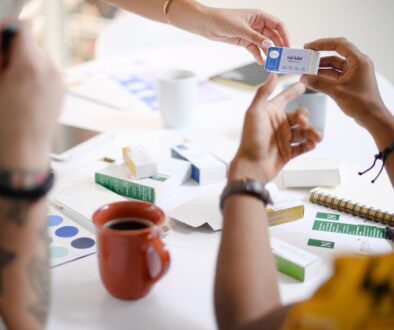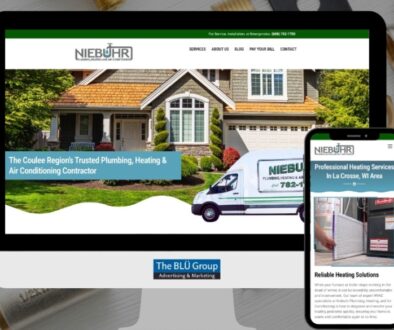Eight Tips for a Successful Print Project
Printed pieces are a lot of fun to design and plan out. There are so many different variables that you get to play with as a designer. Variables like photos and graphics, paper, printing process, finishes, die-cuts, etc. Due to the many variables, it can be a daunting task to successfully design and print a project so here are eight tips to help you out:
1. Document size – When starting a new project the most important thing you need to know is the document size – how big the finished piece (flat and/or folded) will be. A brochure for example could be 8.5 by 14 inches when it’s laid out flat, but folded it could be 8.5 by 3.5.
2. Templates – If you are printing a folded, die-cut, or bound piece be sure to talk with your printer and let them know what you want to do and how you want the finished piece to look/work. They should have a lot of insight about achieving what you want to design. Also, it never hurts to ask your printer if they have any templates that you could use to get your desired result.
3. Trim lines and bleeds – Most professional printers want a 1/8 inch bleed for trimming. If you are printing the work in-house and are unable to have bleeds, you might need to modify your design to have a white border.
4. Folds, gutters, and white space – If you are working on a brochure for example, make sure that the text and images don’t go over a fold and are away from a fold (gutter – inside margins or blank/white space between two facing pages), unless you design the image/graphics and text to go over a fold. If you do, keep in mind where the fold is going to be and where that is in the image/text.
5. Graphics – The photography/image resolution should be at least 300 dpi (dots per inch) for most printed pieces. Be sure to check with your printer when working on larger designs (banners, tradeshow booths, etc.) as they sometimes require different specs. For example, there are some tradeshow booths that we design at the actual booth size, but at a lower dpi per our printer’s request.
6. Type/Copy – Double and triple check your spelling. Look at how your text is laying out and modify kerning (space between letters), leading (space between lines of text), widows (one word or phrase at the top of a column or page), orphans (one word at the bottom of a paragraph), and line breaks accordingly.
7. Colors – CMYK and/or spot colors are used for printed pieces. Depending on how a piece is printed (digital, offset, etc.) the colors can vary slightly – and also make the job more or less expensive. Again, work with your printer to get exactly – or very close to what you want as an end result.
8. File size and requirements – A good practice to get into is asking your printer or advertiser what file sizes and types they can accept – PDFs and JPGs for example. Once you get those specs from your printer (bleed sizes, resolution, etc.) make a preset. I use InDesign for most of my print work and like to title the preset the name of the printer, so that it’s a quick and easy mouse click to get your press files made. Along with the document requirements check your file size. Some printers have you upload a file to their website while others just have you e-mail it to them.
Overall – talk to your printer as soon as possible when starting a project so that they can help you get your desired final result. These are just a few of the many variables to keep in mind when designing a printed piece – but with these tips you will be on a great path to a successful printing project.



